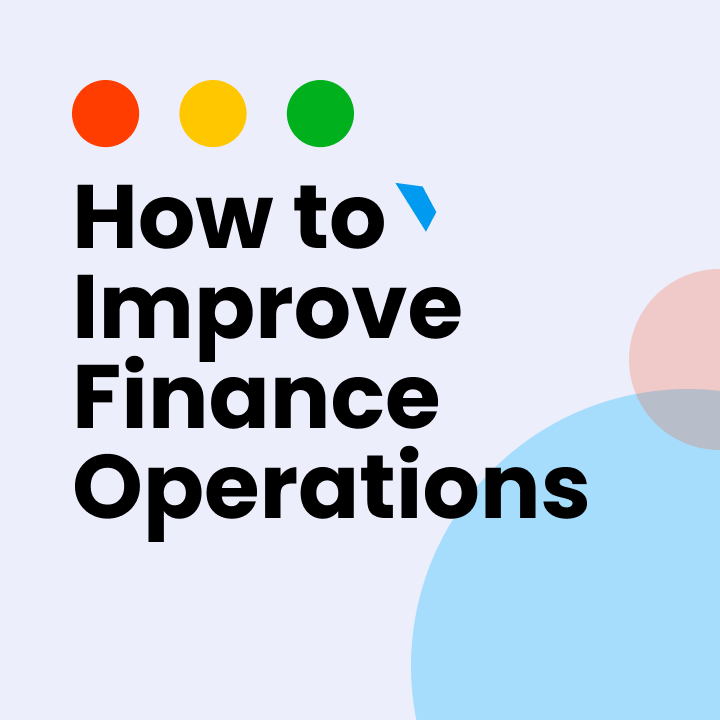One of the first steps a smart project manager takes is identifying key stakeholders—those who have a vested interest in the project’s success or failure. Recognizing these individuals early helps reduce future obstacles and align expectations from the start.
Stakeholder analysis is the process of identifying all relevant parties involved in or affected by a project. This includes not only team members but also clients, suppliers, and regulators. The goal is to understand each stakeholder’s level of influence, interest, and expectations.
By mapping stakeholders early, project managers can develop an effective communication plan. This ensures the right people receive timely updates, reassurance, or recognition, ultimately helping the project move forward smoothly and increasing the chances of overall success.
Why Is Stakeholder Analysis Important?
Evaluating who is invested in a project before it begins helps teams avoid unnecessary complications later. Identifying influential individuals allows you to uncover hidden risks early on. This process fosters transparency, as open communication helps mitigate suspicion.
Stakeholder analysis enables project leaders to determine who should receive specific information and when. It clarifies interests, concerns, and levels of influence, ensuring that every important voice is acknowledged.
Key Benefits of Stakeholder Analysis
Project leaders often overlook the benefits of stakeholder analysis in streamlining their efforts. By taking the time to identify who is involved and what they represent, surprises tend to diminish. Here are some key advantages of stakeholder analysis:
Understand Interests and Expectations
Creating a fresh stakeholder list often reveals underlying hopes and concerns. Recognizing these early can prevent drama from escalating. People are more likely to engage and contribute when they see their ideas valued rather than dismissed.
Gain Support and Reduce Risk
Consistently using the same stakeholder map makes it easier to connect with key individuals before interest wanes. Stakeholders appreciate seeing their input reflected in early drafts, which fosters inclusion and reduces the likelihood of last-minute issues.
Improve Communication and Planning
Mapping stakeholders before a major initiative provides you with their names, interests, and a framework for clear communication. Messages resonate more effectively when both the sender and the audience share a common understanding.
Align Resources and Efforts
Reviewing your stakeholders helps identify who is under-resourced, who is coasting, and who might be ready for a role change. Aligning resources with project timelines ensures that funding and attention follow suit, creating a smooth workflow.
How to Conduct a Stakeholder Analysis
A well-executed stakeholder analysis can transform a chaotic project into a manageable one. Organizing stakeholders keeps surprises at bay. When their diverse needs are documented in one place, it feels more like strategic planning than guesswork.
Step 1: Identify Stakeholders
Start by listing everyone who will interact with the project, without filtering anyone out. Include developers, customer representatives, suppliers, and even local community members. Writing down their names reveals who may support, oppose, or remain indifferent to the project.
Step 2: Categorize Stakeholders (Internal/External, Primary/Secondary)
Once your list is visible, categorize stakeholders based on their relationship to the project. Internal staff work within the same organization, while external partners operate outside it. Classifying stakeholders as primary (directly impacted) or secondary (observing from a distance) helps you focus on the most influential individuals.
Step 3: Use the Stakeholder Matrix (Interest vs. Influence)
A simple stakeholder analysis matrix provides a visual representation of your list. Plot each name on a grid with interest on one axis and influence on the other. Those in the upper right corner possess both high interest and high influence, making them critical to your project. This map directs where to allocate your time and energy.
Step 4: Prioritize and Develop Strategies
With your map in hand, it’s time to prioritize. Determine which stakeholders need your attention this week and which can wait. Next to each name, jot down how to update them, whether to have a brief conversation, or simply note key points. This preparation helps prevent misunderstandings during stressful times.
Step 5: Monitor and Update Regularly
Budgets, egos, and priorities can shift rapidly. A previously overlooked stakeholder may suddenly become crucial. Regular check-ins keep your list current and maintain a positive atmosphere. Address potential issues before they escalate, ensuring the project stays on track.
Stakeholder Analysis Matrix
A stakeholder analysis matrix transforms a daunting list of names into a clear, one-page map. This chart highlights who is invested in the project and their level of influence, allowing you to focus on the key players. Keeping this snapshot visible helps streamline communication and clarify discussions.
What Does “Interest” Measure?
Understanding what “interest” measures in stakeholder analysis is crucial for identifying who is invested in the project’s outcome. For instance, a department facing budget cuts will closely monitor every change and actively advocate for their interests. In contrast, a casual reporter may only occasionally glance at progress updates.
What Does “Influence” Measure?
In any project, there are individuals who can effect change with a single email. Therefore, grasping what “influence” measures in stakeholder analysis is essential. It involves identifying those who can alter budgets, delay timelines, approve critical tasks, or subtly shift the project’s direction without much notice.
Types of Stakeholders
When a new project begins, quickly identifying the various stakeholders can eliminate guesswork and clarify the analysis process. You can categorize stakeholders by job title, attitude, or influence, with each category telling a different story. Before diving into spreadsheets or Gantt charts, take note of the key players you expect to encounter.
Internal vs. External
Internal stakeholders are employees of the same organization and often receive updates before anyone else. This group includes developers, managers, and executives—essentially anyone involved in daily operations. Their attitudes can significantly impact the project’s progress, especially under pressure or tight deadlines.
External stakeholders observe from the outside but do not participate in the team. This group includes concerned customers, suppliers, inspectors, and partner companies. Most approvals or rejections manifest as calendar dates, making it essential to recognize these signals daily.
Supportive vs. Adversarial
When a group passionately believes in a new idea, it can propel the project forward. Supportive team members may offer tools or encouragement, creating a positive atmosphere that makes reaching milestones feel achievable.
Conversely, a few dissenters can disrupt progress. They may raise concerns about overspending, environmental impacts, or express dissatisfaction with changes. This resistance can delay timelines and divert attention from critical issues.
Influential vs. Non-Influential
Every project has key individuals who wield significant power. A single signature from them can secure funding, while a casual approval can move the project forward. If they withdraw their support, even the best-laid plans can falter. Savvy managers maintain open lines of communication and stay attuned to their needs.
Others may not have the authority to change the course of the project, but they still feel its effects. Keeping them informed, addressing their questions, and acknowledging their input—even if it doesn’t directly influence decisions—helps maintain a positive atmosphere and reduces rumors. These small gestures can pay off when the project reaches its delivery date.
Stakeholder Analysis in Project Management
Mastering stakeholder analysis in project management can determine a project’s success. It helps identify key players and how to engage with them effectively. Understanding stakeholders’ roles and needs smooths the project process and minimizes potential issues. Here are some reasons why this analysis is vital, along with an illustrative example:
Why It’s Crucial for Project Success
The individuals who can delay project approval or slow progress are often not the ones handling daily tasks. Identifying stakeholders allows the team to tailor updates, memos, and meetings instead of distributing generic reports that go unread. This approach leads to fewer last-minute surprises and creates a more manageable workflow.
Example: Construction Project Stakeholder Analysis
In a construction project, stakeholders may include owners, builders, suppliers, and local residents. By applying stakeholder analysis, the team can identify these groups and understand their interests, such as safety and budget concerns. This knowledge enables the team to communicate effectively and address issues promptly.
Common Mistakes to Avoid
Even the most visually appealing stakeholder chart can conceal potential pitfalls. Identifying these hidden challenges early helps keep your project on track. By avoiding common traps, project leaders can also find some relief. Many experienced professionals note that these issues tend to recur frequently.
Failing to Prioritize
Projects often involve a diverse group of individuals with varying levels of power and interest. Treating every opinion as equally important can dilute focus and obscure the key issues. This leads to wasted time as the loudest, least relevant voices distract the team.
Engaging Stakeholders Too Late
Waiting until major decisions are made before involving stakeholders almost guarantees conflict. Engaging them early allows for meaningful input and feedback, rather than just presenting a finalized plan. Discussing ideas while they are still in development often turns skeptics into supporters.
Not Updating the Analysis
Projects rarely follow a straight path. New stakeholders may emerge, while others may fade away, causing shifts in dynamics. If the list of key players is neglected, unexpected challenges, new regulations, or funding opportunities may go unnoticed. Regularly reviewing and updating this list every few weeks keeps communication open and fosters a positive atmosphere.
Stakeholder Analysis Example
Sometimes, the best way to grasp a concept is to see it in action. A clear stakeholder analysis example simplifies the process, illustrating how to identify key individuals, understand their needs, and plan effectively to streamline work, save time, and maintain focus.
Case: Wind Farm Project
In the wind farm project, stakeholders included local communities, government agencies, investors, and construction teams. Each group had distinct concerns, such as environmental impact, legal permits, funding, and safety. The project team compiled a list of stakeholders and carefully analyzed their interests and influence. This informed their communication strategy and engagement approach.
Stakeholder Mapping Outcome
The stakeholder mapping revealed that local communities had high interest but low influence, prompting the team to prioritize keeping them informed and addressing their concerns. Government agencies, with both high influence and interest, required close engagement and regular updates. Investors, while influential, were less concerned with daily details, so the team provided them with key progress reports. This clear mapping helped balance efforts and enhance project success.
Overall project management, try Morningmate‘s intuitive platform free today. With real-time collaboration, centralized communication, and easy task tracking, Morningmate helps teams stay aligned and projects run smoothly. Experience firsthand how Morningmate can elevate your project planning—sign up for your free trial now and transform the way your team works.




